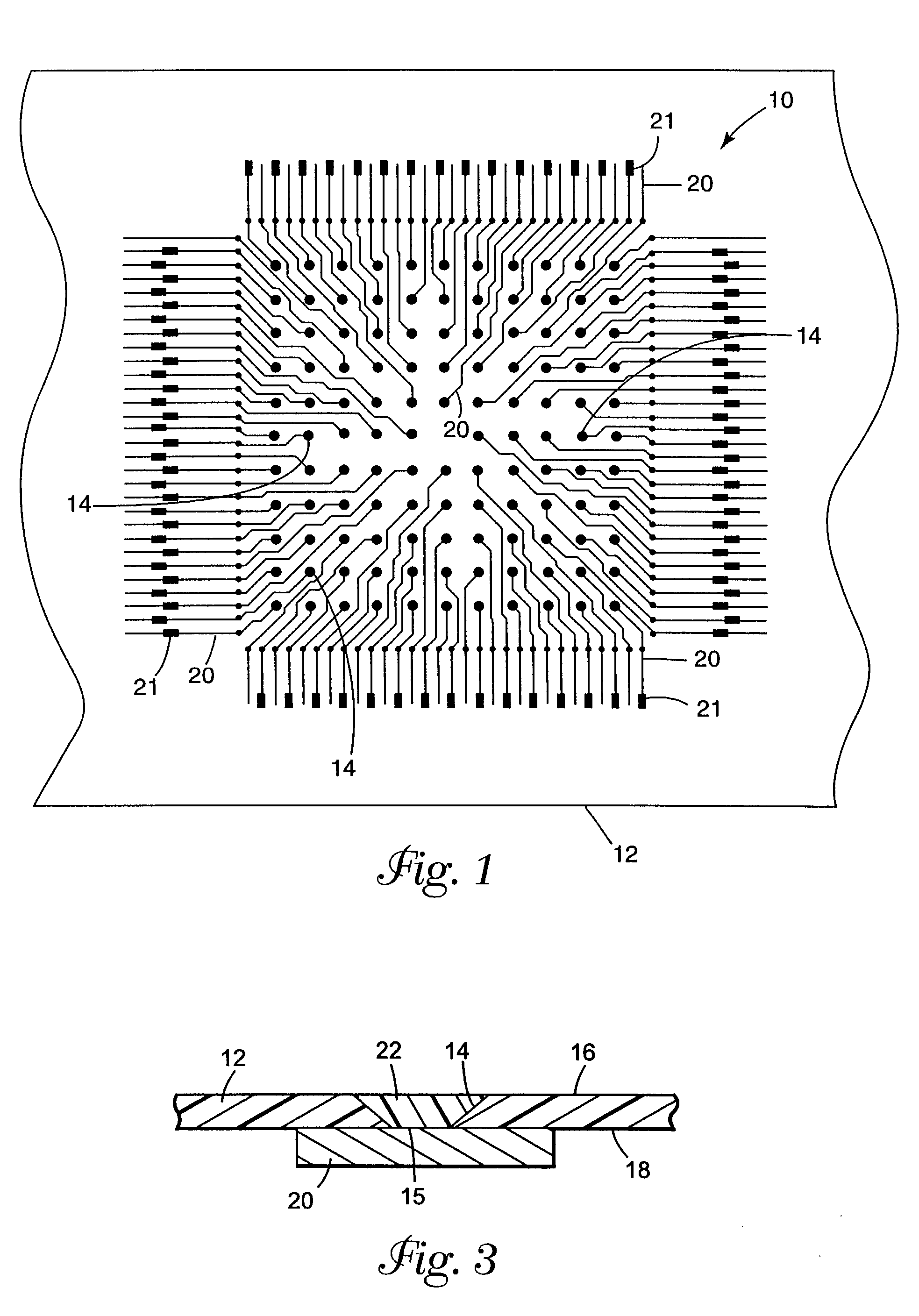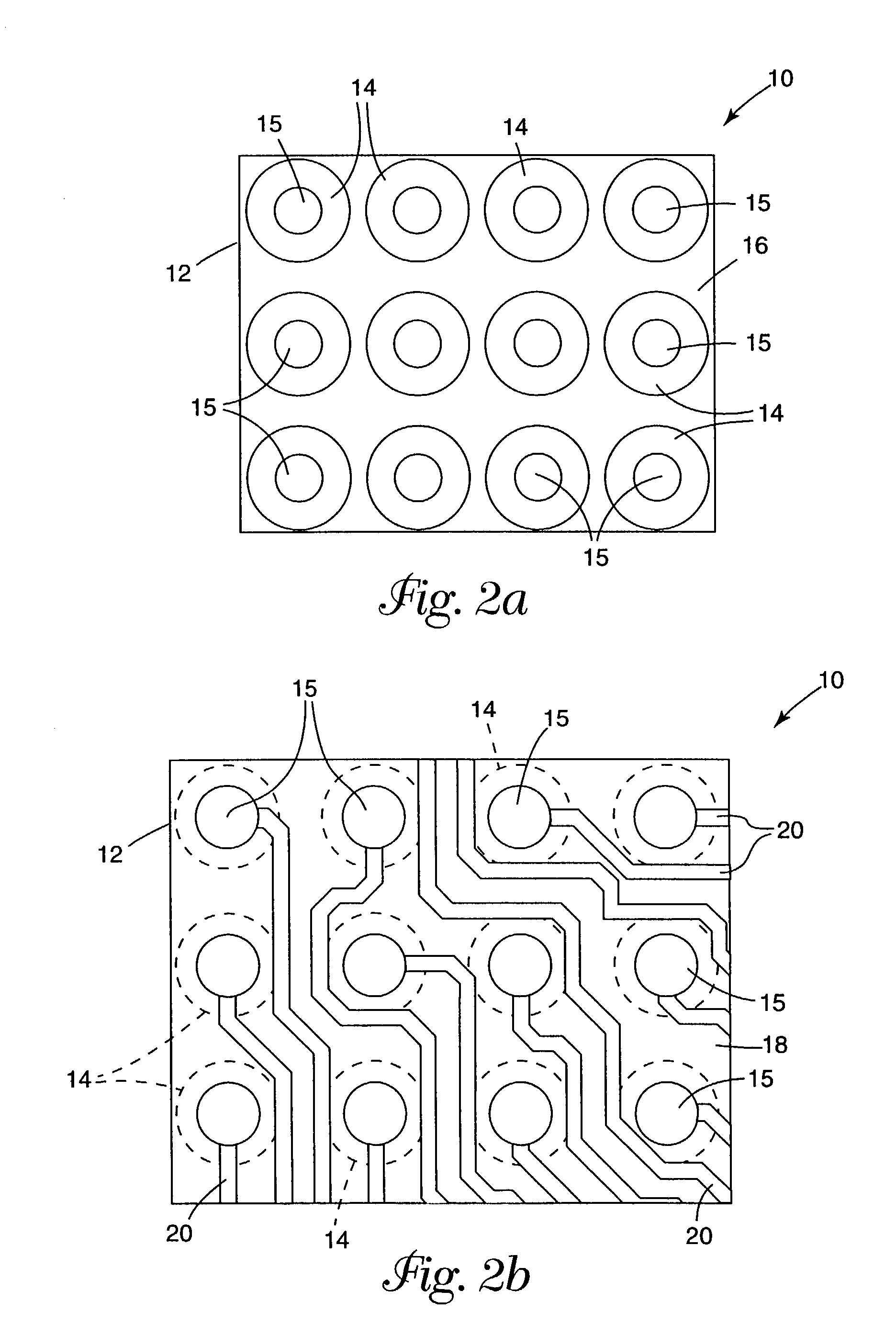Film based addressable programmable electronic matrix articles and methods of manufacturing and using the same
a technology of electronic matrix and programmable elements, which is applied in the direction of electrolysis, diaphragms, isotope separation, etc., can solve the problems of difficult to differentiate closely related strains of microorganisms by these methods, take days to culture a sufficient quantity of microorganisms, and difficult to store and handle. , to achieve the effect of convenient storage and handling
- Summary
- Abstract
- Description
- Claims
- Application Information
AI Technical Summary
Benefits of technology
Problems solved by technology
Method used
Image
Examples
example
Free Field Electrophoresis on a Microcircuit
[0092]A laminated microinterconnect (LMI) circuit essentially identical to that shown in FIG. 1 was prepared according to the method disclosed in U.S. Pat. No. 5,401,913 (Columns 3, 4, and 5, and FIGS. 1–7), comprising a polyimide substrate having copper microcircuit traces on one side. Vias of approximately 60 μm diameter were chemically milled from the side opposite the microcircuits in registration with the copper circuit termini, on a 200 μm pitch.
[0093]An aqueous solution containing bovine serum albumin (BSA, Sigma Chemical Co., St. Louis, Mo.) that was labeled with fluorescein isothiocyanate (FITC) in a pH 7.0 phosphate buffered saline buffer (PBS) was applied to the LMI on the side having vias. Electrical connection was made to individual electrodes using platinum microprobes and voltages were applied using a computer-controlled voltage supply. At pH 7.0, the BSA was positively charged and accumulated at negatively biased electrodes...
PUM
| Property | Measurement | Unit |
|---|---|---|
| Length | aaaaa | aaaaa |
| Temperature | aaaaa | aaaaa |
| Electrical conductivity | aaaaa | aaaaa |
Abstract
Description
Claims
Application Information
 Login to View More
Login to View More - R&D
- Intellectual Property
- Life Sciences
- Materials
- Tech Scout
- Unparalleled Data Quality
- Higher Quality Content
- 60% Fewer Hallucinations
Browse by: Latest US Patents, China's latest patents, Technical Efficacy Thesaurus, Application Domain, Technology Topic, Popular Technical Reports.
© 2025 PatSnap. All rights reserved.Legal|Privacy policy|Modern Slavery Act Transparency Statement|Sitemap|About US| Contact US: help@patsnap.com



